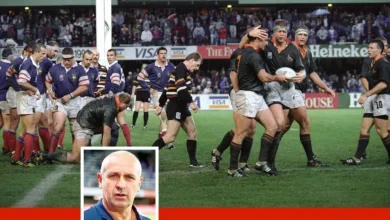Champions League Performance Insights: Finding space between the lines

There was a word Xabi Alonso used more than once when discussing his attacking midfielders after Real Madrid’s last UEFA Champions League fixture against Juventus. That word was “participate”.
On match winner Jude Bellingham, for example, Alonso cited the player’s “quality to participate in the build-up” and “the determination to participate at the finish”. When asked about Player of the Match Arda Güler, meanwhile, Alonso reflected that “he wants to be near the ball” and “wants to participate a lot in the play”.
Ahead of Matchday 4, the UEFA game insights unit has built on Rafa Benítez’s post-game analysis of the Real Madrid-Juventus contest by examining the performance of both players, to explore where they did their best work, and one key feature came to the fore: how effectively the pair operated between the lines.
“The best players need very little space because their body control, their awareness, and their technical ability is so good,” said UEFA Technical Observer Jan Peder Jalland, and we will explore these elements below.
After Matchday 3, Alonso described Bellingham as the “complete” player and integral to this is his excellent work between the lines – which we see highlighted in the video above.
In clip one, it is Bellingham’s ability to adjust his position that stands out. “Here Bellingham has found space and he adjusts very well,” explains Jalland. “His awareness is very good. He’s probably expecting the ball to his left foot, but it comes to his right, but he has the body control to be able to go both ways, depending on the pass.”
The second clip shows Bellingham’s ability to move into the pocket and Jalland points out also the role of Arda Güler who supplies him with a disguised pass. “I’m pretty sure when he receives the ball, he knows he’s going to Bellingham. And he fakes with his eyes. You see how he lifts his arm, he fakes the pass, and this makes Teun Koopmeiners shift over to open up the space the other way.”
As for clip three, Jalland identifies the importance of Bellingham’s patience as he resists the temptation to step back closer to the ball but stays in his position, behind the Juventus midfielder. “A lot of players get impatient, but you see how Bellingham is looking around and waiting because the key here is that he receives the pass behind the midfield.”
“The best players need very little space because their body control, their awareness and their technical ability is so good.”
The graphic above shows that Bellingham received the ball between the lines more times (17) than any other player in the match. Arda Güler managed a second-best total of 12. As Alonso asserted, this was all the more impressive for the fact it was against opponents who surrendered little space, especially in the first half.
Bellingham has the awareness and technical proficiency to excel in tight spaces and the physical capacity to get behind the back line – and the data from the Juventus game underlines this as he ranked first among Real Madrid players for receiving line-breaking passes (13) and second for runs in behind (ten).
This second graphic illustrates Madrid’s shape when in possession against a compact Juventus side and we see highlighted the average position of Arda Güler (15), the other midfielder featured in this analysis.
For coaches today, when space is increasingly limited, the value of a midfielder who can find different positions, receive between the lines, collect the ball on the half-turn under pressure and play a key pass is enormous. Like Bellingham, Arda Güler was noticeable for his positional play as well as for his use of the ball, and the video below provides two examples of his work.
Clip one shows him setting up the 1v1 opportunity for Vinícius Júnior in the lead-up to Bellingham scoring, and Jalland notes the technical detail of how Arda Güler keeps the ball close to his feet and keeps the opposition guessing.
Jalland elaborates: “He takes small touches and can twist and turn and produce quality in such small spaces. Also, he doesn’t give away any clear signals so it seems the pass could come at any time. This means that players are a bit afraid to press him and give away space.”
In clip two, he exhibits his excellent movement and awareness by dropping down and producing the first-time flick to Brahim Díaz and, overall, the young Türkiye international ranked second among Madrid players for both key passes (six) and passes into the final third (nine).
Coaching reflections: UEFA Technical Observer Jan Peder Jalland on finding space and game awareness
When I work with young players, I tell them to look at videos of players like Andrés Iniesta, David Silva and Kevin De Bruyne. They all offer excellent examples of how to operate between the lines. It’s not just about running but about adjusting your position, which means having an open body stance, sometimes backing away, sometimes moving sideways, sometimes just standing still. Players from a young age have different abilities and perhaps a player with less speed or physical ability might have to read the game more to make an impact. With game awareness, certain players have more capability to take things in over time, but it is something that is coachable too.
On the training ground, I would suggest that you might start with just mannequins and passes in between the lines, with a player moving and finding a striker or winger in behind. From there, you could set up combination plays and finishing. Next you could add some central defenders with mannequins as midfielders, and then gradually build up by adding defenders and midfielders, and then maybe countering. If it can go both ways, I think that’s a good thing as you want to make it as close to the game as possible.
It’s important to increase the level of difficulty with the number of opposition players and the size of the pitch, depending on how much space you want to give the players. Varying the length and width of the pitch and the number of players is important to provide different challenges. By making the pitch smaller, for example, you can work on your players’ ability to handle smaller spaces and less time, which demands more awareness and more technical ability. Few players means more repetition while more players means less repetition but is closer to the game, which is where we want to end up.
Jan Peder Jalland is coach of Norway’s Under-21 men’s national team.





